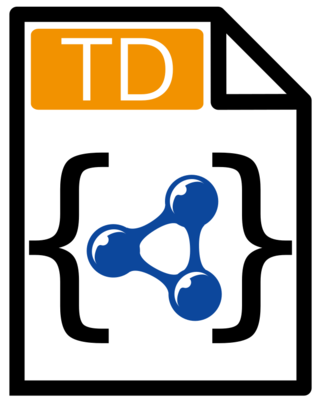Syntax
Every HTTP URL conforms to the syntax of a generic URI. The URI generic syntax consists of five components organized hierarchically in order of decreasing significance from left to right: [13]
URI = scheme ":" ["//" authority] path ["?" query] ["#" fragment]
A component is undefined if it has an associated delimiter and the delimiter does not appear in the URI; the scheme and path components are always defined. [14] A component is empty if it has no characters; the scheme component is always non-empty. [13]
The authority component consists of subcomponents:
authority = [userinfo "@"] host [":" port]
This is represented in a syntax diagram as:
The URI comprises:
- A non-empty scheme component followed by a colon (
:), consisting of a sequence of characters beginning with a letter and followed by any combination of letters, digits, plus (+), period (.), or hyphen (-). Although schemes are case-insensitive, the canonical form is lowercase and documents that specify schemes must do so with lowercase letters. Examples of popular schemes includehttp,https,ftp,mailto,file,dataandirc. URI schemes should be registered with the Internet Assigned Numbers Authority (IANA), although non-registered schemes are used in practice. [lower-alpha 2] - An optional authority component preceded by two slashes (
//), comprising:- An optional userinfo subcomponent followed by an at symbol (
@), that may consist of a user name and an optional password preceded by a colon (:). Use of the formatusername:passwordin the userinfo subcomponent is deprecated for security reasons. Applications should not render as clear text any data after the first colon (:) found within a userinfo subcomponent unless the data after the colon is the empty string (indicating no password). - A host subcomponent, consisting of either a registered name (including but not limited to a hostname) or an IP address. IPv4 addresses must be in dot-decimal notation, and IPv6 addresses must be enclosed in brackets (
[]). [16] [lower-alpha 3] - An optional port subcomponent preceded by a colon (
:), consisting of decimal digits.
- An optional userinfo subcomponent followed by an at symbol (
- A path component, consisting of a sequence of path segments separated by a slash (
/). A path is always defined for a URI, though the defined path may be empty (zero length). A segment may also be empty, resulting in two consecutive slashes (//) in the path component. A path component may resemble or map exactly to a file system path but does not always imply a relation to one. If an authority component is defined, then the path component must either be empty or begin with a slash (/). If an authority component is undefined, then the path cannot begin with an empty segment—that is, with two slashes (//)—since the following characters would be interpreted as an authority component. [18]
- By convention, in http and https URIs, the last part of a path is named pathinfo and it is optional. It is composed by zero or more path segments that do not refer to an existing physical resource name (e.g. a file, an internal module program or an executable program) but to a logical part (e.g. a command or a qualifier part) that has to be passed separately to the first part of the path that identifies an executable module or program managed by a web server; this is often used to select dynamic content (a document, etc.) or to tailor it as requested (see also: CGI and PATH_INFO, etc.).
- Example:
- URI:
"http://www.example.com/questions/3456/my-document" - where:
"/questions"is the first part of the path (an executable module or program) and"/3456/my-document"is the second part of the path named pathinfo, which is passed to the executable module or program named"/questions"to select the requested document.
- URI:
- An http or https URI containing a pathinfo part without a query part may also be referred to as a 'clean URL' whose last part may be a 'slug'.
| Query delimiter | Example |
|---|---|
Ampersand (&) | key1=value1&key2=value2 |
Semicolon (;) [lower-alpha 4] | key1=value1;key2=value2 |
- An optional query component preceded by a question mark (
?), consisting of a query string of non-hierarchical data. Its syntax is not well defined, but by convention is most often a sequence of attribute–value pairs separated by a delimiter. - An optional fragment component preceded by a hash (
#). The fragment contains a fragment identifier providing direction to a secondary resource, such as a section heading in an article identified by the remainder of the URI. When the primary resource is an HTML document, the fragment is often anidattribute of a specific element, and web browsers will scroll this element into view.
A web browser will usually dereference a URL by performing an HTTP request to the specified host, by default on port number 80. URLs using the https scheme require that requests and responses be made over a secure connection to the website.



